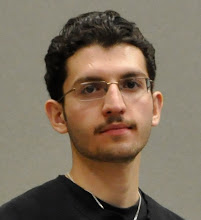From the very beginning of the song, which starts with numerous trills and "la la la la's", it is obvious that the song is very lively. Apart from Hampson's singing, the orchestral music is also played very fast which makes the song lively.
The music is polyphonic. There are many cadences, though they are usually very short. Although there aren't any refrains, many words are repeated numerous times. There are lots of accelerandos and ritardandos along with many accents and ornaments. There are also many notes that are stretched for a long time, especially at the end of the song. This is seen in almost every opera.
There is only one person singing and that is Thomas Hampson. However, he is not the only performer. The orchestra is also extremely important in opera. Unfortunately, this video does not show the musicians playing the instruments. One important thing to notice about the singer is that he does not just stand in one place while singing, he moves around during the song, looking at different parts of the audience.
While singing, he uses many hand gestures to accompany the words. The body language adds significantly to the performance. The facial expressions change greatly throughout the song which also adds to the experience. The performer seems to feel the song all over his body.
Below is a piece from Gioachino Rossini's The Barber Of Seville.
Tuesday, March 30, 2010
Subscribe to:
Post Comments (Atom)

No comments:
Post a Comment